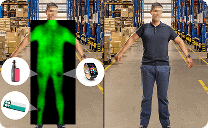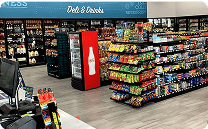In This article
Asset protection is a critical component of risk management in any business. It encompasses the policies, technologies, and practices used to defend physical and digital assets against threats such as theft, fraud, misuse, or accidental damage. These strategies help preserve company resources and aim to ensure operational continuity, regulatory compliance, and customer trust.
While “asset” can include financial, intellectual, and digital property, in surveillance-driven environments like retail, hospitality, logistics, and food service, asset protection typically focuses on physical assets, such as merchandise, equipment, cash, and infrastructure.
Core Components of Asset Protection
A strong asset protection program blends people, process, and technology. Key elements often include:
- Video Surveillance: Monitoring key areas such as stockrooms, sales floors, loading docks, and cash handling zones to deter theft and provide evidence when incidents occur.
- Access Control Systems: Restrict entry to sensitive locations, ensuring only authorized personnel can access high-value or at-risk areas.
- Alarm Systems: Detecting intrusions, tampering, or after-hours activity, and automatically notifying appropriate personnel or triggering lockdowns.
- Operational Audits: Regular evaluations of processes and compliance to identify weaknesses and verify adherence to security policies.
- Employee Training and Accountability: Educating staff on policies, reporting protocols, and theft prevention strategies, while also monitoring for internal risks.
Asset protection in retail and food service also includes strategies to reduce shrinkage losses due to theft, error, or waste. This could involve integrating point of sale (POS) data with surveillance footage to detect suspicious patterns or investigating discrepancies between inventory counts and sales records.
Technology’s Role in Asset Protection
Modern asset protection strategies increasingly rely on innovative technology to turn surveillance and system data into actionable insight. AI-powered cameras can detect motion anomalies, track unauthorized access, or flag repeated customer behaviors that signal potential shoplifting. Integrated platforms can link alarms, video feeds, and access logs into a single case file, streamlining investigations and improving response times.
For businesses with multiple locations, cloud-based platforms allow asset protection managers to monitor all sites from a central dashboard, ensuring consistency and control at scale. These platforms also provide reporting tools that help identify trends, like recurring loss events, high-risk periods, or vulnerable locations, enabling leaders to strengthen defenses proactively.
Business Benefits of Asset Protection
Implementing adequate asset protection provides a wide range of benefits:
- Reduced losses from theft, fraud, and operational error.
- Improved employee accountability and policy compliance.
- Faster, more informed incident response.
- Better use of data for audits, training, and continuous improvement.
- Enhanced customer experience by creating a safer, more orderly environment.
Asset protection isn’t just about stopping bad actors—it’s about implementing a culture of vigilance, responsibility, and proactive risk management.
Protect What Matters Most with DTiQ
DTiQ helps businesses protect their physical assets with intelligent video surveillance, analytics, and loss prevention tools. From shrink reduction and employee monitoring to policy compliance and investigative support, the 360iQ platform gives you the visibility and insight needed to secure your assets and optimize your operations. Whether you’re managing merchandise, equipment, or customer trust, DTiQ helps you keep it safe. Want to learn more? Schedule a demo.





























